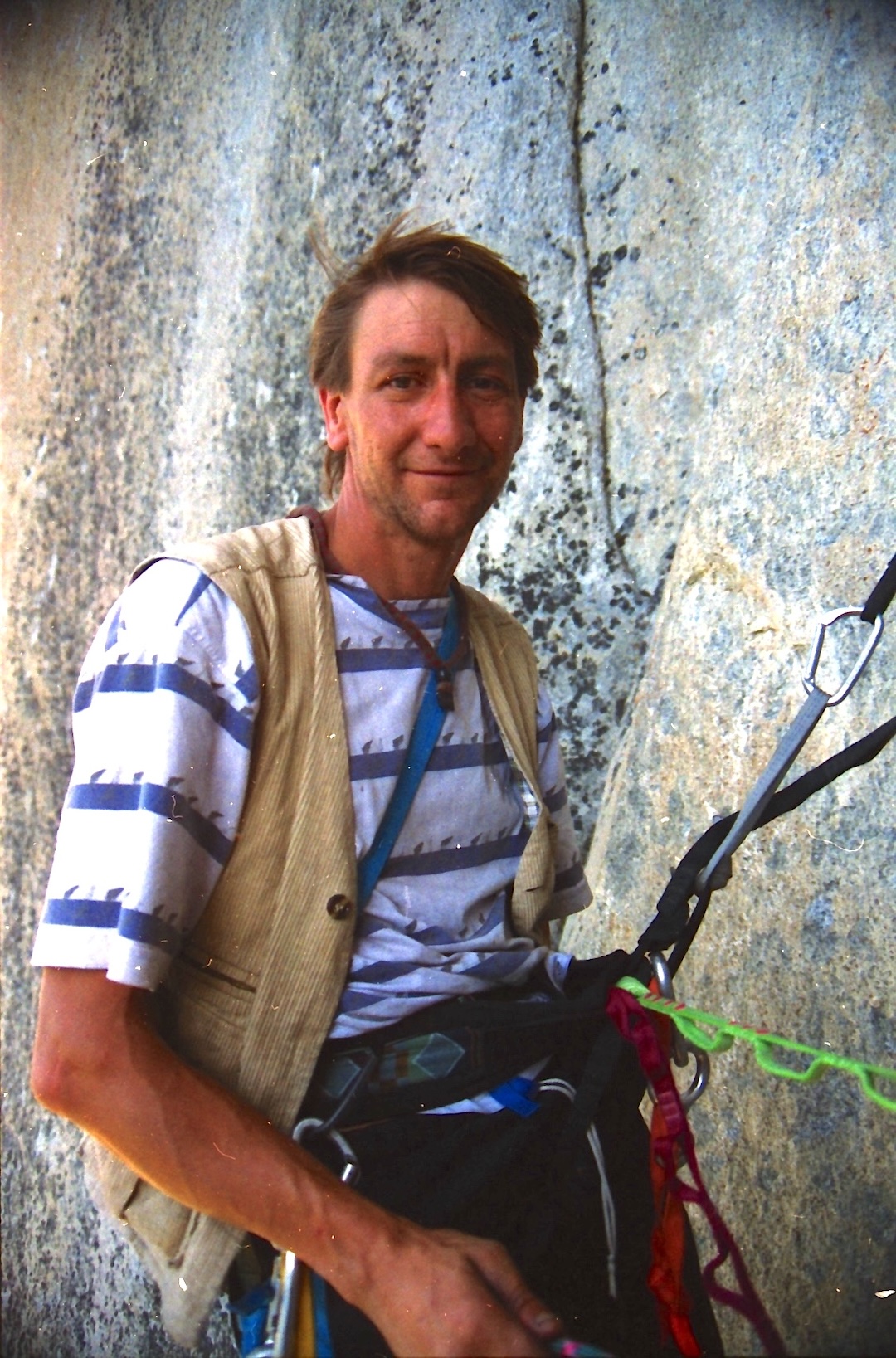John William Middendorf IV, 1959–2024

On July 28, 1992, John Middendorf and Xaver Bongard reached the summit of Great Trango Tower, a massive shield of rock in the Karakoram. They had spent the previous 18 days climbing the east face, fighting poor weather and never-ending objective hazards. Mostly unscathed, the two spent three days rappelling the 4,400-foot, 33-pitch route. Predictably, they were soon household names in the climbing community. One of the few Grade VIIs on Earth, The Grand Voyage was also one of the biggest rock climbs ever done.
For Middendorf, the celebrity was more than appropriate. He had climbed dozens of walls all over the globe, establishing new routes and fast times, and was only midway through a very productive outdoor life.
John Middendorf was born in New York City on November 18, 1959, and lived in Connecticut for the first ten years of his life. His father, J. William Middendorf II, was a military man, financier, and diplomat who worked on Republican presidential campaigns and had appointments under three presidents. His mother, the late Isabelle Paine Middendorf, had trained as a nurse but left that career to raise John and his four siblings.
Middendorf spent three preteen years in Holland with his family—his father was named ambassador to the Netherlands in 1969—and his teenage years in northern Virginia. He was first exposed to climbing when his parents sent him to a mountaineering school near Telluride, Colorado. Through the early to mid-1970s, Middendorf climbed at East Coast crags, including ice climbs in New Hampshire.
In 1978, he made his first trip to Yosemite with friend John Ely and became acquainted with the climbing landscape that would shape his entire life. He attended Dartmouth in New Hampshire for two years to study engineering, but in 1981 transferred to Stanford, closer to his newfound home. After earning his degree, he was offered a spot on the rescue team and moved to Yosemite for an extended stay. Between 1981 and 1986, he fired off dozens of wall routes—new routes, speed records, and solo adventures, many of them first winter ascents, first one-day ascents, fastest ascents, and on and on.
In 1986, he joined longtime Valley climbers Steve Bosque and Mike Corbett for a winter attempt on Half Dome’s south face. A storm nearly killed all three as the route became a waterfall and falling water and snow crushed their primitive portaledges and their bodies. They eventually were helicoptered off. The south face would’ve been Middendorf’s 40th big-wall route in the Valley. Instead, it became a turning point.
Middendorf began reinventing the portaledge and formed A5, a company that designed and developed wall-climbing gear. Having moved to Flagstaff, Arizona, Middendorf suddenly had easy access to the desert country of the Four Corners, and he explored the area, making first ascents of about 20 towers. His new base also afforded trips to Zion, which was still wide open for new routes. Middendorf and friends did a handful of new, hard walls in the Grade V–VI range, including the stunning southwest buttress of Abraham. He also climbed a new Grade VI on Mt. Hooker in the Wind River Range with Steve Quinlan.
In 1997, he sold A5 to The North Face, then dabbled in several creative and scientific outlets, including surveying, a newspaper job, and river guiding. He met his future wife, Jeni, in 2007, while guiding the Grand Canyon. They were married and had a son, Rowen, before moving to Australia in 2009. Rowen’s sister, Remi, was born in Tasmania.
Middendorf continued climbing, and in 2010 he became active in the push to save ancient forests in Tasmania. Having already received a master’s degree in architecture from Harvard University, he studied fabric architecture at the University of Sydney and founded a new portaledge company, D4. Members of the Bob Brown Foundation, a Tasmanian environmental organization, used his portaledges—the successors to heavy plywood platforms—for tree-sitting disruptions of the logging of ancient trees for wood chips. His particular interest was the Takayna/Tarkine wilderness in northwest Tasmania. He made all his designs open-source, so that anyone with some scissors, fabric, tubular aluminum, and rudimentary sewing skills could copy his designs.
As a writer, Middendorf published dozens of articles and several books on wall climbing. He also did probably the most significant research into the development of climbing gear that any single researcher has ever undertaken; the research was published in 2023 in two volumes called Mechanical Advantage: Tools for the Wild Vertical.
Middendorf died unexpectedly in his sleep while visiting family in Little Compton, Rhode Island, on June 21, 2024.
“John was a delightful character who loved the world’s wilderness,” Bob Brown said after his passing. “Our foundation is shocked by his sudden loss. We are grieving for his wife, Jeni, and young family.” Middendorf was awarded the prestigious Deni Greene Award by the foundation posthumously.
—Cameron M. Burns

